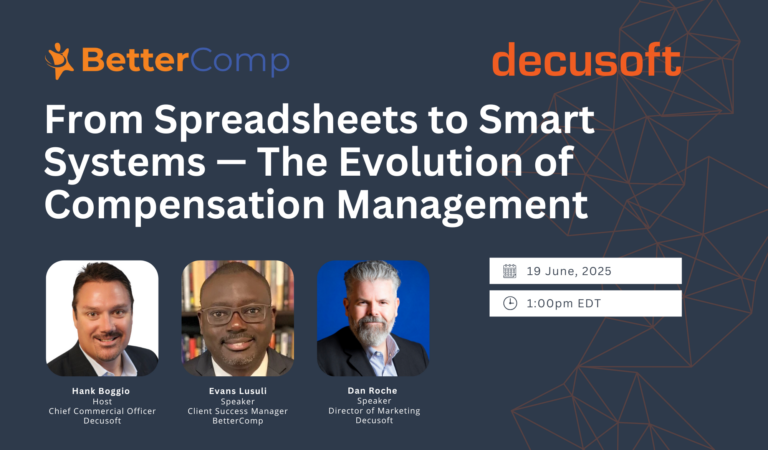Incentives and commissions are critical to the effectiveness of a sales team. Markets are changing at unprecedented rates today, and sales managers are under more stress than ever to meet rising sales goals. It’s critical to ensure that your commission plan incentivizes the right sales performance to achieve your business objectives, particularly in today’s fast-paced world.
What Is Commission?
A commission is a type of payout dependent on volume, revenue, or a predetermined level of performance. When paying commission, two approaches are widely used. One commission rate is dependent on the number of services or goods provided. The second method is based on the number of sales made based on sales goals. A real estate broker is an example of a worker who receives this kind of compensation: they sell a property and are paid for it. It doesn’t matter how long it took to sell the house or what job operations were involved; what matters is that the house was sold.
What Is a Sales Compensation Plan?
The two primary components of traditional sales commission plans are fixed base pay and discretionary incentives. Base pay is simple to understand and is structured to pay a certain sum over a defined period of time. Another essential part of the compensation package is sales commission structures, which specify how sales reps will be compensated and which metrics will be rewarded.
When you use sales incentives as part of your incentive compensation package, you can create various configurations depending on the sales goals. They can be a powerful strategy to inspire success within the sales team and top performers due to their variable nature. We’ve broken down the most popular sales commission structures and how you can use them to help you decide which is suitable for your business goals and sales cycle.
Common Compensation Package Models
- Base salary
- Salary plus sales commission
- Hourly (Maybe minimum wage or above)
- Hourly rate plus sales compensation
- Commission-only
- Territory volume
- Profit margin/revenue-based
- Residual commission
- Contractor commission
Base Salary Plus Commission Plan
Variable compensation as a share of a single sale’s profit is one of the most basic and widely used sales incentive structures. Here’s a simple example to get you started. Consider this scenario: the corporation sells a $200,000 product for a 7% sales fee. Your sales reps will get $14,000 for each unit they sold. They will receive this commission for on-target earnings in addition to their base pay.
When to use this commission structure: Revenue commission arrangements are ideal for smaller sales teams or startups where the emphasis is on a single product or service with fixed pricing that significantly impacts the company’s growth.
Total Sales / Gross Margin Commission
The gross margin strategy is another basic variable pay arrangement. These sales commission models take into account the benefit from each purchase, as well as the price of the sale and the inbound costs of making the sale, especially for a new customer.
When can gross margin pay structures be used? Gross margin plans will ensure bottom-line stability while still inspiring salespeople. It’s a smart strategy to use when you start to expand your sales team and scale your business.
Straight Commission Sales Comp Pan
Straight commission contracts employ salespeople on a commission-only basis, with flexible pay accounting for all of their earnings (thus, there is no fixed salary component). Straight commission plans, according to others, aren’t a defined revenue incentive plan. However, it’s essential to define what it means to work on a sales commission-only basis with your sales force and ensure proper communication is in place.
Sales organizations who work on a commission-only basis are highly driven to close deals, but their work often comes with more tension due to the high level of risk involved, leading to sales burnout and lower retention overall.
When it’s necessary to use commission-only structures: Straight commission plans make the most sense in some cases, such as shortened sales times or where there is a chance for large commissions and profitability, etc., despite the fact that they are not widely used.
Planning Sales Process Arrangements for Profitability
There are many ways to plan out commission rates, and there is no one-size-fits-all approach. When deciding on the best commission structure for your business, ask yourself the following questions:
What are the aims and priorities of our company goals?
Based on our sales capital capacity, what is a reasonable estimation of sales targets?
How do we effectively inspire top sales talent based on their various responsibilities?
Does our sales comp plan incentivize the right behaviors?
How do we define sales leaders?
Are our commission systems incentivizing team members and sales reps to go above and beyond their quotas?
Answering these questions provides you with the details you need to create reward programs. With this knowledge, you can help decide which arrangement is optimal for the team and will yield the best results.
When it comes to calculating the appropriate commission rates, there is no one-size-fits-all template. The best rate to pay salespeople depends on various factors, including the market, the position of the salesperson, geographic area, and more. Here are a few best practices to consider when looking for the correct number:
A higher-paying position is one of the main reasons sales reps quit a career, according to industry research. You can benchmark rewards across markets, equate them to your own, and assess the most successful approach for your team using a database. We recommend you customize incentives for specific sales roles. Responsibilities vary depending on the position. A customer development representative’s job is distinct from an enterprise account executive or a sales engineer. Their commission arrangements for revenue should represent this.
To achieve top sales targets, you must find the right incentive compensation arrangement. However, adequate sales compensation entails more than just picking the correct sales fee structure. Companies should assess and rework their benefits regularly. And, in today’s volatile markets, businesses must be able to address important questions such as these:
Do we have the right strategy to deliver our business goals?
How do we draw on previous results and incentive successes?
Are there any flaws in our current compensation strategy that we can address?
How will we treat our salespeople fairly in comparison to our counterparts in the industry?
Do we still have the ability to meet our objectives if top sales talent leaves?
The Bottom Line on Sales Commission Plans
Executive compensation can be a tricky subject to master. When designing a robust sales commission plan, there are hundreds of factors to consider and various performance metrics to weigh. Your business should recruit top sales talent and incentivize them with a well-designed strategy. Appropriate sales commission pay may mean the difference between a company’s long-term success and a series of disappointments and underperformance. For more information on compensation, check out our whitepaper about using compensation software to reduce errors while saving time & money.




